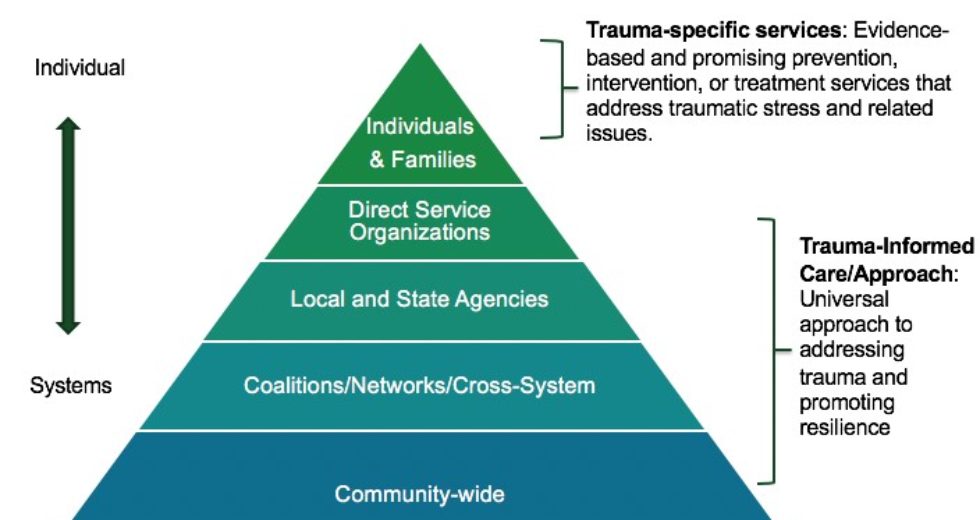Advancing Trauma-informed Care Within and Across Child-Serving Systems

Trauma is a widespread, harmful, and costly public health problem. Children and adolescents are particularly affected by trauma. The majority of youth in the United States will be exposed to at least one traumatic event before the age of 18; many will be exposed to multiple forms of trauma. Unaddressed childhood trauma can have significant negative consequences on future health and well-being.
Every system—child welfare, juvenile justice, education, early childhood, healthcare—has a role to play in preventing and mitigating the effects of adversity and trauma. A multi-system trauma-informed approach refers to a coordinated, cross-system strategy that has aligned policies, practices, and services for supporting healing and resilience.
What We Did
With the American Institutes for Research, Chapin Hall formed the Multi-System Trauma Informed Collaborative (MSTIC), an effort supported by the U.S. Department of Justice’s Office of Juvenile Justice and Delinquency Prevention (OJJDP). The collaborative provided training and technical assistance (TTA) to state-level leaders of child-serving agencies from Illinois, Connecticut, and Washington. It guided state teams through a comprehensive planning process to develop strategic plans to improve screening, assessment, and treatment of youth, and to maximize opportunities to leverage state and federal funds.
What We Found
TTA and state teams recognized a number of critical factors that facilitated or hindered the success of the planning processes: constrained resources to support the planning and implementation, varying levels of readiness across systems, state team member turnover, and changes in executive leadership. To address these factors, Chapin Hall developed a guide to assist state and local policymakers, public agency administrators, trauma experts, provider partners, and other stakeholders who seek to advance trauma-informed care within and across their child-serving systems. Although focused on state systems involving child-serving agencies, the guide can help those looking to support within-systems transformational change or those enacting reforms at the local of community level.
What It Means
Adopting a multi-system trauma-informed approach to address child trauma requires considerable time and effort on the part of each participating system. The MSTIC initiative represents one of the first examples of formal cross-sector collaboration among child-serving systems. The initiative provides early lessons for future collaborations.
This guide offers a framework and process informed by preliminary lessons learned from the MSTIC work, along with guidance from the fields of trauma-informed care, systems change, and implementation science. As cross-system efforts to address trauma continue to spread, knowledge about what works for adopting, evaluating, and sustaining a cross-sector trauma-informed approach will grow. Given what is known about the prevalence and effects of childhood trauma, it is clear that no one system alone can address trauma. Providers, policymakers, funders, and researchers across service sectors and communities play a role in contributing to a larger vision of a fully integrated system of care where trauma is no longer a barrier to youth leading their healthiest, happiest, most fulfilled lives.



 Thank you for your interest in Chapin Hall’s research. Please share some information to access this file.
Thank you for your interest in Chapin Hall’s research. Please share some information to access this file.